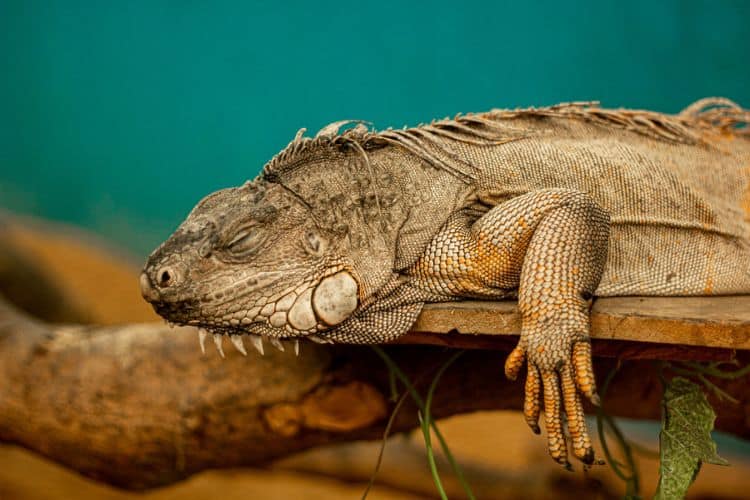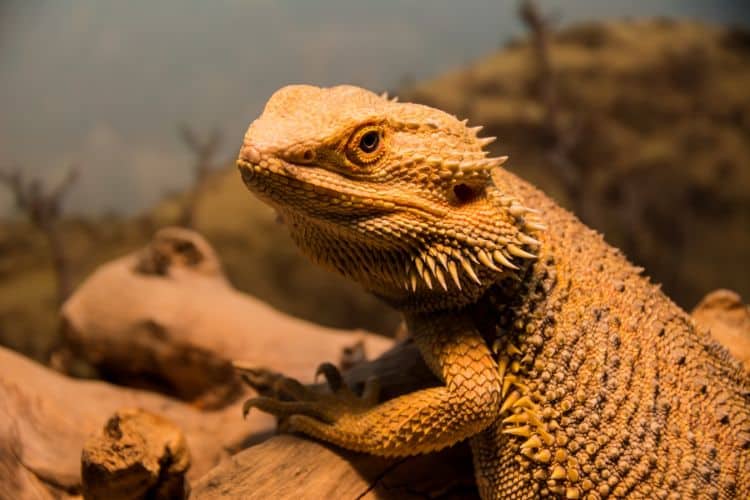You look over at your bearded dragon lounging under the
You start to wonder, “Is my dragon brumating even though it’s summer?”
While some activities may resemble brumation, bearded dragons do not actually brumate during summer. Read on to understand why your dragons slow down when summer hits and how to meet their seasonal needs.
Why You May Think Your Bearded Dragon is Brumating in Summer

Seeing your vivacious dragon turn into lazybones during summer is alarming at first. Spending more time resting? Little interest in food or play? These match some signs of brumation you may have read about; a reptile version of mammalian hibernation involving deep sleep. Logically, shouldn’t brumation happen when it’s cold out?
Let’s examine a few reasons for lazy summer behavior that often get confused for brumation:
- Heat Avoidance – Bearded dragons are cold-blooded, so temperatures impact their metabolism. When it’s really hot, your dragon may consciously avoid overheating by inactivity. Finding cooler hideouts and laying still are smart survival tactics.
- Breeding Focus – Reproductive cycling also alters normal routines. Appetite changes as breeding dominates energy expenditure for egg-laying females. Males roam more seeking mates while avoiding clashes with competing suitors.
- Illness – Summer stresses like heat strain, dehydration, or parasites sap normal zip too. Schedule a vet visit if lethargy lasts over 2 weeks or worsens rapidly to catch medical issues promptly.
Make no mistake, while these can worry owners, they show your bearded dragon is adapting to—not brumating during—the dog days of summer correctly.
So What Exactly Is Brumation for Bearded Dragons?
Brumation differs distinctly from similar sluggishness in summer. It’s a natural process that serves an essential purpose for bearded dragon health during colder months in their native Australia.
As temperatures drop when winter approaches, brumation kicks in. Reptile metabolism relies on external heat sources to power essential body functions. Bearded dragons conserve their limited energy during chilly weather by entering prolonged dormancy.
Your dragon will demonstrate multiple shifts if allowed to brumate naturally:
- Preferring cooler temperatures
- Moving less and sleeping more
- Loss of appetite and irregular bowel movements
- Ignoring usual social contact
Brumation resembles hibernation in mammals but retains slightly higher activity levels. It sustains bare-minimum life functions through weather inhospitable for an ectotherm.
By spring, normal animation returns as temperatures rise again.

Clear Signs Your Bearded Dragon Is Truly Brumating
While often confused, differentiating summer sluggishness from winter brumation is easy when you know the distinguishing signs.
True brumation in bearded dragons revolves around temperature dependence. As daylight hours diminish in fall, dropping ambient temperatures trigger your dragon’s brumation prep.
You’ll observe your pet…
- Seeking cooler zones in the
terrarium rather than basking under the heat lamp. Desired body temperature may dip 15-20°F from normal 98-105°F to around 75-85°F. - Sleeping deeply most of the day and night rather than normal active periods.
- Refusing food for extended periods rather than displaying a normal healthy appetite. Urinating or passing stool happens very infrequently too.
- Ignoring handling, social interaction, or enrichment activities they previously enjoyed.
These behaviors match wild adaptations allowing bearded dragon ancestors to conserve energy through harsh winters. Brumation continues until spring warms the landscape again.
Caring for Your Bearded Dragon’s Brumation Needs
Respecting natural brumation periods remains important for your dragon’s health. Some guidelines can support their winter dormancy:
- Permit access to cooler zones around 75-85°F to allow temperature regulation
- Maintain proper photoperiods with a reptile lighting schedule
- Lightly mist vegetables to provide moisture
- Gently monitor your beardie’s weight during brumation weekly
- Avoid handling unless moving to a clean enclosure
With appropriately balanced lighting, heating, humidity, and space, your pet can cruise through brumation safely to emerge rejuvenated in springtime.
Why Hot Summer Months Don’t Induce Brumation
Now that you understand true brumation, it becomes clearer why summer doesn’t stimulate this survival response.
Brumation provides energy conservation when cold climates limit food sources and activity periods for bearded dragons. These conditions do not apply in summer’s bounty.
Instead, heat waves bring different challenges:
- Risk of overheating
- Dehydration
- Accelerated metabolism needing ample nutrition

Additionally, breeding season falls in summer too. In it, your dragon focuses its energy on reproductive priorities. Females gestate and lay eggs while males roam more while guarding territory.
Since neither scarcity nor breeding matches brumation triggers, dragons remain active in different ways as summer peaks—they don’t brumate.
Note: Attempting to artificially induce brumation by cooling temperatures could severely harm bearded dragons.
Wrapping Up
After understanding these key insights into bearded dragon behavior cycles, the answer becomes quite clear.
Bearded dragons do NOT demonstrate brumation during hot summer months. They adapt to heat extremes and breeding pressures differently.
What owners occasionally misinterpret as summer brumation involves other forms of inactivity instead:
- Avoiding excess heat
- Conserving energy for reproduction
- Possible illness
While summer sluggishness can worry pet owners, it often proves harmless. Just make sure ample shade and hydration are available for your dragon. Schedule a vet visit if lethargy exceeds 2 weeks or accelerates.
If true brumation develops, it will occur in fall and winter only. In this case, you can support the healthy cycle by providing access to preferred cooler temperatures around 75-85°F during those colder months.

